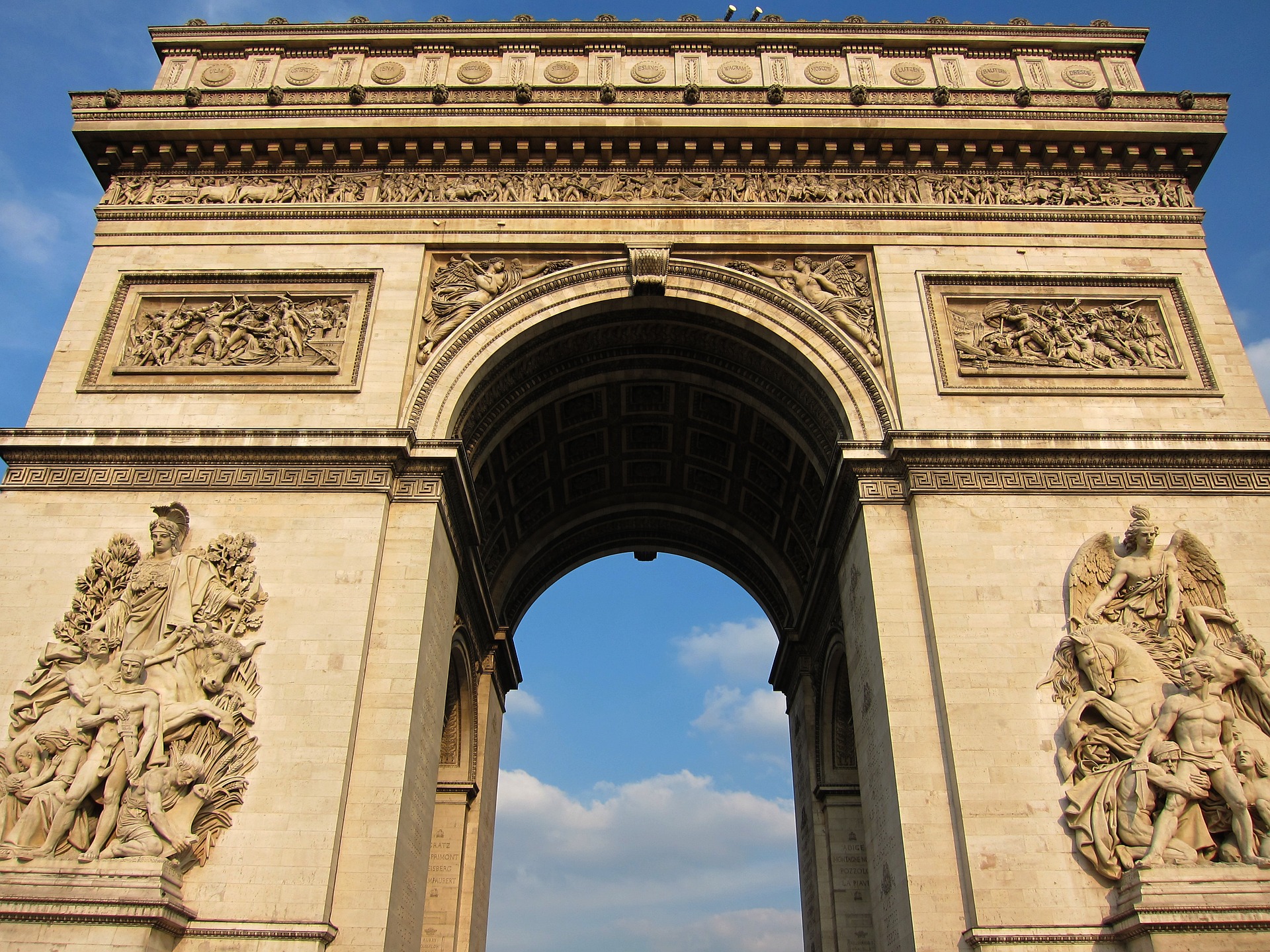The Design

Commissioned by Napoléon I to commemorate his military conquests, the Arc de Triomphe is the world’s largest triumphal arch. Architect Jean François Thérèse Chalgrin’s creation is twice the size of the ancient Roman Arch of Constantine after which it is modeled. Work on the Arc stopped when Napoléon was defeated in 1814, but started up again in 1833 in the name of King Louis-Philippe I, who dedicated it to the glory of the French armed forces. Guillaume Abel Blouet completed the Arc based on Chalgrin’s design, and is the architect actually credited on the monument itself.
An emblem of French patriotism, the Arc de Triomphe is engraved with the names of war victories and 558 generals (those who died at war are underlined). An Unknown Soldier buried under the arch and an eternal flame of remembrance lit since 1920 commemorate victims of the world wars. On national holidays like Armistice Day and Bastille Day, the decorated Arc de Triomphe features at the beginning or end of a parade or other celebration.
Each of the Arc’s pillars is adorned with one of four large sculptural reliefs: The Departure of the Volunteers in 1792 (aka La Marseillaise) by François Rude; Napoléon’s Triumph of 1810 by Cortot; and Resistance of 1814 and Peace of 1815, both by Etex. The simple design and immense size of the Arc de Triomphe are typical of late 18th-century romantic neoclassicism.